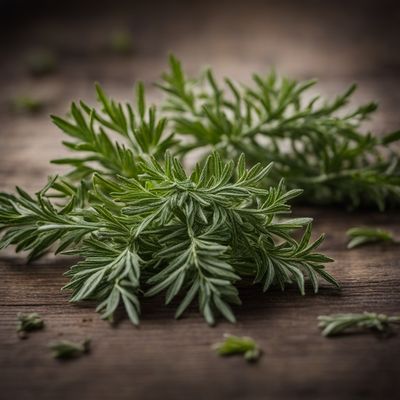
Ingredient
Mugwort infusion leaves
The Magic of Mugwort
Mugwort infusion leaves are characterized by their vibrant green color, delicate texture, and a distinct herbal aroma. They have a slightly bitter and earthy taste, with hints of citrus and mint. These leaves are commonly used to make herbal infusions, teas, and as a flavoring agent in various dishes.
Origins and history
Mugwort infusion leaves have been used for centuries in traditional Asian and European cuisines. They have cultural significance in many countries, often associated with folklore and healing practices. Mugwort is native to Europe, Asia, and North America, and has been cultivated for its culinary and medicinal properties.
Nutritional information
Mugwort infusion leaves are low in calories and rich in essential nutrients such as vitamin K, vitamin C, and dietary fiber. They also contain beneficial plant compounds with antioxidant and anti-inflammatory properties.
Allergens
Some individuals may be allergic to mugwort infusion leaves, especially those who are sensitive to other plants in the Asteraceae family, such as ragweed or daisies.
How to select
When selecting mugwort infusion leaves, look for fresh, vibrant green leaves without any signs of wilting or discoloration. Avoid leaves that appear yellow or brown. Opt for organically grown leaves whenever possible to minimize exposure to pesticides and other chemicals.
Storage recommendations
To maintain the freshness of mugwort infusion leaves, store them in a plastic bag or airtight container in the refrigerator. They can stay fresh for up to a week. Alternatively, you can dry the leaves and store them in a cool, dark place for several months.
How to produce
Mugwort can be grown in a home garden or container with well-draining soil and full sun exposure. It is a hardy plant that requires minimal maintenance and can be harvested throughout the growing season.
Preparation tips
Mugwort infusion leaves can be used to make herbal infusions and teas by steeping them in hot water. They can also be added to soups, stews, and stir-fries to impart a unique flavor. Additionally, mugwort leaves can be used as a natural insect repellent or incorporated into homemade skincare products.
Culinary uses
Mugwort infusion leaves are commonly used in traditional Asian dishes such as rice cakes, dumplings, and soups. They are also used in herbal medicine and as a natural remedy for various ailments.
Availability
Mugwort infusion leaves are commonly available in Asian grocery stores and specialty herb shops. They can also be found in some farmers markets or grown in home gardens.

